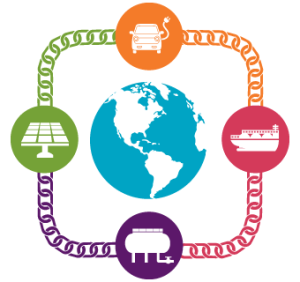K&L Gates Blockchain Energizer – Volume 26
By Buck Endemann, Ben Tejblum, and Daniel Cohen
 There is a lot of buzz around blockchain technology and its potential to revolutionize a wide range of industries from finance and health care to real estate and supply chain management. Reports estimate that over $4.5 billion was invested in blockchain startups in 2017 alone, and many institutions and companies are forming partnerships to explore how blockchain ledgers and smart contracts can be deployed to manage and share data, create transactional efficiencies, and reduce costs.
There is a lot of buzz around blockchain technology and its potential to revolutionize a wide range of industries from finance and health care to real estate and supply chain management. Reports estimate that over $4.5 billion was invested in blockchain startups in 2017 alone, and many institutions and companies are forming partnerships to explore how blockchain ledgers and smart contracts can be deployed to manage and share data, create transactional efficiencies, and reduce costs.
While virtual currencies and blockchain technology in the financial services industry have been the subject of significant debate and discussion, blockchain applications that could transform the energy industry have received comparatively less attention. Every other week, the K&L Gates’ Blockchain Energizer will highlight emerging issues or stories relating to the use of blockchain technology in the energy space. To subscribe to the Blockchain Energizer newsletter, please click here.
IN THIS ISSUE
- LO3 Energy and Direct Energy Business Are Launching “Exergy,” a B2B Transactive Energy Network.
- Green Power Exchange Releases Updated White Paper for Blockchain-based P2P Energy Platform.
- Arizona Governor Signs Legislation Allowing Corporations to Store and Transmit Data via Blockchain.
- Chinese Petrochemical Company Utilizes Blockchain for Trial Gasoline Shipment.
- Chile’s National Energy Commission Launches Trial Blockchain Data Initiative.
- Chelan County Public Utility District Cuts Power to Three Unauthorized Cryptocurrency Miners.
To view more information on theses topics in Volume 26 of the Blockchain Energizer, click here.
